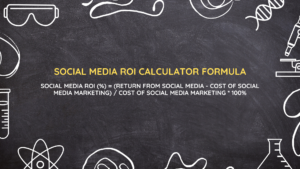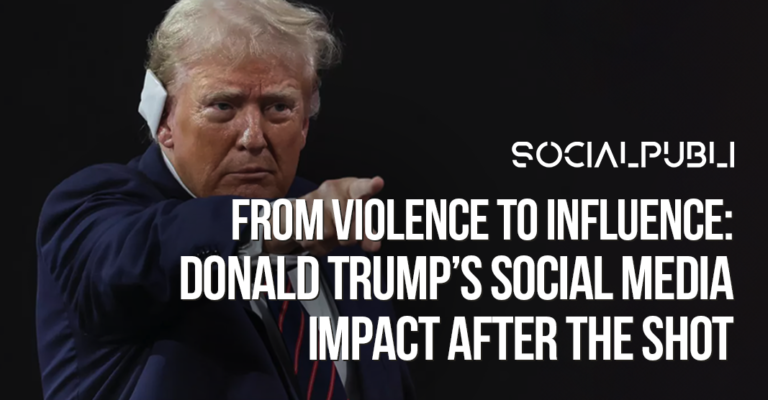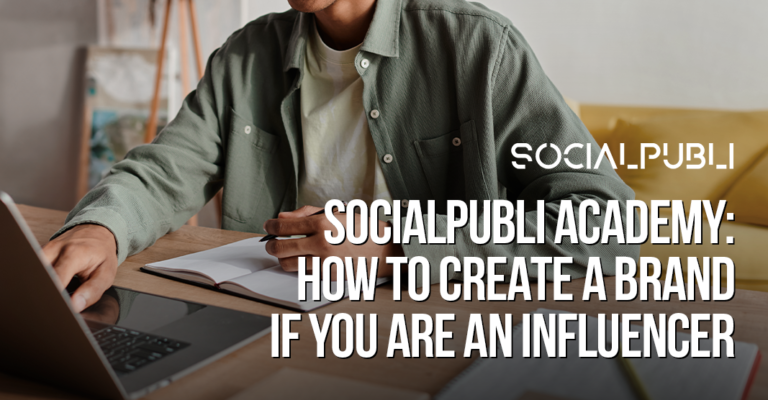As a social media manager, one of my recurring nightmares is talking about ROI and how to demonstrate how it is performing in our favor.
This scenario can’t give you a headache , and not because we don’t believe in the value of social media. Proving ROI is a multi-step process with several variables, inputs and considerations, and sometimes it can be tricky to demonstrate, even though you are 100% sure that your social media campaign is working. Almost 96% of marketers agree that social media delivers positive returns, but the difficult part is proving it.
In this article we will be talking about ROI, how to calculate, why it is so important and all the variables that take part in this cocktail. So let ‘s the fun begin.
What is social media ROI and why does it matter?
ROI stands for return on investment. So basically social media ROI means the business value returned from social media marketing and advertising.
In other words, social media ROI measures the results of social media marketing compared to its costs. How good a campaign did, or why sending x amount of products to influencers have boosted sales.
It’s a way to assess whether your social media strategy is generating a positive outcome for your financial or strategic goals and as you can imagine it is not an easy task to do. It involves many variables and conditions but there is a general formula that makes it easier to find out the ROI of a specific campaign.
Also read: how to buy tiktok coins
Here’s what the components of the formula mean:
- Value generated from social media. The definition of value varies from business to business. Value can include increased sales, leads, conversions, or cost savings due to effective social media engagement.
- Costs of social media investment. This means all costs associated with doing and creating your social media strategy. It can include advertising budgets, content creation costs, employee salaries, software & tool subscriptions, and other resources related to social media activities.
The result of the formula is usually expressed as a percentage.
Any ROI percentage higher than 0 means that your social media efforts have generated more value than the resources you invested. That’s great news but on the other hand, a negative ROI means you invested more than you made back, so basically you lose money.
Measuring social media ROI is super important to prove the efficiency of their campaign. By calculating ROI, you can determine what’s working and what’s not and attribute real business results to social media. Which at the same time is really useful to change your strategy in the long term if you find out something is not working as it should be.
Tips for improving your social ROI
On that note, let’s quickly cover some additional pointers for stepping up your social media marketing ROI.
1. Optimize your posting frequency
With millions of users posting daily on social media it’s easy for your content to get lost in a sea of new posts. That means your target audience isn’t going to see your content and if they can´t see your content they will not engage with it.
For that reason you need to post new content regularly to get more visibility. Ideally, you should post multiple times a day to get your content in front of the right audience but if this is too much also reposting and recycling content is also valid.
Social media as we already said is trial and error and we recommend you testing different posting frequencies to see what works best for you. Also creating a schedule will help you to keep up with what you already post or what things are missing.
2. Let influencers to communicate your brand story
We all know the importance that influencers carry on social media, they are like magicians and can instantly boost a brand’s online presence with their posts. However, it’s important to find influencers whose values align with your brand. If you’re just stepping into the influencer community it is important to make sure these popular profiles are aligned with your values and them by sharing your brand to their audience. Not everything is followers, make sure you search for your target audience the profiles that suit best for your brand or campaigns.
3. Make optimizing and tailoring a ritual
Switch things up with your social media posts whenever there’s a need. Is super important to optimize your organic social posts using new imagery, keywords and headlines. On social media, it’s all about trial and error. On paid media try out new ad types and track how your audience receives them. Don’t be afraid of messing things up a little bit with content. By trying new things and doing paid media you will eventually find out what works best for you.
4. Know your audience well enough
Identify your target audience and understand what exactly they want from you on social media. Try to always be one step ahead. You’ve got to get inside their heads to understand what drives and influences them to give them exactly what they need with your content.
What platforms are they into? What content they want on their feed. The way they communicate, if they have a more formal or informal way of communication on social media. Mastering all of this reflects higher engagement and better interactions, ultimately driving ROI.
Some useful social media ROI tools:
Now that you know the theory behind measuring social ROI, here are some tools to make the process easier.
Also read: how to unlink Facebook and Instagram












